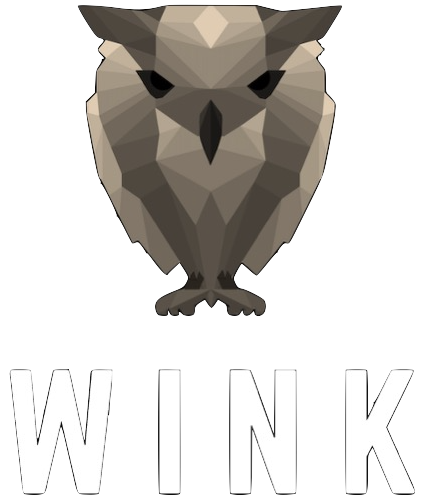#53 - The Sleep Tech Boom !
Over a 10-year period I witnessed 1st hand what it was like to invent a piece of sleep tech.
My PhD supervisors - Prof Leon Lack and Dr Helen Wright - published the first study showing short wavelength light (ie, green or blue light) could change the timing of our circadian rhythms (ie, body clocks).
And they did this by gluing LED lights to ‘Buddy Holly’ glasses. There was even sticky tape over the LEDs so that they weren’t so harsh on the eyes.
Fast forward to October 2012, where I was sitting at a 3-minute Thesis competition (ie, where PhD students do a 3-min talk about their thesis in a non-science-y way).
After the comps, one of the judges stood up to give an inspiring talk about how wonderful our University was.
He held up the finished product of the Re-Timer glasses that my supervisors invented.
Yet, my pride was short-lived - especially after a claim he made:
“It goes to show how easy it is to move from an idea to a sophisticated piece of sleep tech!”
In that moment, I was flooded with memories from the past 10 years …
The excitement when a new organisation was ‘interested’.
The disappointment and dismay when there was silence from the same companies (we call this ‘ghosting’ now in social media circles).
The anger when they found inferior products coming into the market before theirs.
So is it worth turning your idea into sleep tech?
Prior to the Re-Timers’ release, there was an example of a successful piece of sleep tech.
It was a vacuum that was stuck on a person’s face, and set to ‘blow’.
It actually started out this way!
It’s now called CPAP.
It stands for Continuous Positive Airway Pressure. It’s a highly effective treatment for sleep apnea (ie, limited-to-no breathing during sleep). And it’s now a multi-billion dollar company.
And like the Re-Timers, I’m proud to say that it was invented by an Australian (Prof Colin Sullivan).
Whilst the roads for both of these Aussie inventions have been rollercoaster rides, the financial outcomes for these Aussie inventors have been completely opposite.
Prof Sullivan negotiated both a yearly consulting fee and a stake in the company.
His consulting fee provides a handsome salary per year, and his shares are worth millions.
In contrast - and notwithstanding that ResMed is huge compared to Re-Time Pty Ltd - Prof Lack and Dr Wright have seen sales for the Re-Timers exceed $1 million dollars per year for a number of years now.
Yet they have not received one dollar from these sales.
The Sleep Tech Boom!
The last 5 years has seen not only the shift from Positive Psychology - to - The Wellbeing Movement - to - the Wellness Movement - but it has also witnessed an explosion of sleep tech products.
One could argue this rise in sleep tech is due to a single product - the FitBit.
The FitBit was sold on the premise of improving overall health.
It could track your activity each day via an accelerometer and in some models, a heart rate monitor.
And it could track your sleep.
What consumers did not know is that such devices had been around for years.
Us scientists had been using activity monitors that were scientifically validated (ie, shown to be a good measure of sleep). But they were expensive (over $1000 for a setup).
Companies like FitBit and Garmin made similar devices more affordable for the people.
Yet, the early data were showing they were shit at measuring sleep (my words, here’s theirs).
But the masses didn’t care…
Or did they?
One thing that 2020 has shown us is that people differ in their scientific literacy.
So much so, that some of them are dying because their scientific literacy is so poor.
They see someone who they trust, and they follow their advice. They even spend money on them.
And the same thing happened with FitBits.
A lot of people trusted the company when they said it would help their sleep.
But what they did was buy themselves a bad ruler that looked good.
That is, it didn’t measure their sleep well. But it looked good on their wrist, and the associated app would tell them how much sleep they got.
Back to the Question …
Can you turn an idea into sleep tech?
To be honest, it is possible.
I’ve learned you don’t have to be a sleep researcher.
In fact, you don’t even need a tertiary qualification in sleep.
I have been down this road - well, it is actually a rollercoaster.
And there is more than one rollercoaster to ride.
I’m currently involved in various ways of fusing technology with my knowledge of sleep.
And there is one learning I’ll share with you at this point (amongst a bunch of learnings I can share).
And that is - even though there is still a Sleep Tech Boom happening - and you may feel that you don’t have the ability to compete with the other “1,000 sharks in the sea” - just remember this …
Those 1,000 sharks cannot take care of the MILLIONS of people who need help with their sleep.
I really encourage you at this point to sign up for our free weekly newsletter (if you haven’t done so already).
Because this Sunday, I’m going to add a few more learnings to this post that I’ll email to our subscribers.
In that email we’re going to announce a change for 2021 that’s gonna be really cool.
And it’s our subscribers who are going to benefit first in January 2021 !
Prof Michael Gradisar






